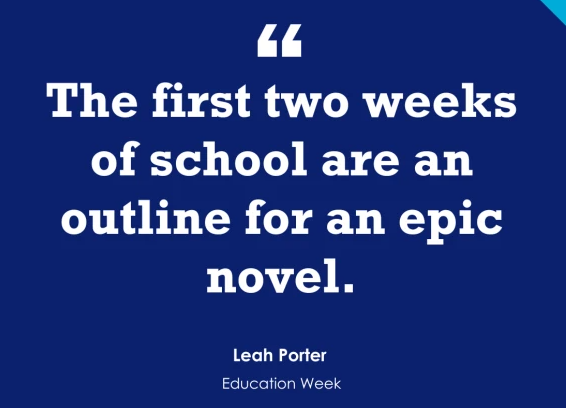This piece was in my inbox this morning, and I thought it could be a good reminder and inspiration to share here. While the title made me curious - “Don’t waste instructional time at the beginning of the year”, the content of the article goes on to talk about how building structure, culture, and belonging in your classroom is anything BUT “wasted instructional time”.

While none of the teacher contributors to this article are specifically STEM or robotics teachers, the advice and reflection they offer is really powerful for the STEM and robotics setting. If we want to build a classroom culture where students are willing to take risks and embrace failures, they need to feel accepted, safe, and comfortable.
If we want to build a classroom where students can engage in healthy debate and express their ideas clearly and respectfully, they need to learn how to listen, think, and use their voice effectively.
If we want to build a classroom space where the focus can be more on engagement and project based learning and less on “classroom management”, then structure is incredibly important. And building structure collaboratively goes a long way to making sure that structure works WITH your class, or team, and not around them.
What else would you contribute to this topic that has helped establish norms and belonging for your students?
2 Likes
The screenshot you shared, and the notion of not wasting “instructional time,” is very important.
I also received an email this morning that peaked my interest from LinkedIn about the soft skills required for employees (our future students).
STEM and robotic competitions are so much more than just learning about technology and engineering. They are the foundation for cultivating soft skills that students will apply throughout their lives.
Building structure, culture, and a sense of belonging in our classrooms is so important to nurturing these skills. It allows students to feel accepted, safe, and comfortable, encouraging them to take risks and embrace failures. It empowers them to engage in healthy debates, express their ideas clearly, and develop their voice effectively.
In our world of robotics and STEM, where engagement and project-based learning are at the core, we recognize the importance of structure. Collaborative structure ensures that it works with our class or team, not just around them.
1 Like
That whole article is great for so many reasons, but the part where Lauren Merkley talks about helping students to tell their own stories is really resonating with me at the moment. I was just thinking about how this is true even with very young students. Finding ways to honor the individuality of each child and helping them to understand how they are essential to the entire group/class/team’s identity and experience is so powerful. If we take the time to cultivate each student’s positive sense of self in this way, the results can stay with them well into the future.
2 Likes
Yes Aimee! I totally agree - especially in situations where we want students to be able to speak freely and voice their ideas, opinions, and engage in healthy debate and dialogue, it is so important to meet students where they are in terms of finding their voice. Not all students are comfortable speaking out like that, and giving the time and space to build that comfort can help ensure that all students’ voices are heard - not just the loudest ones 
1 Like

